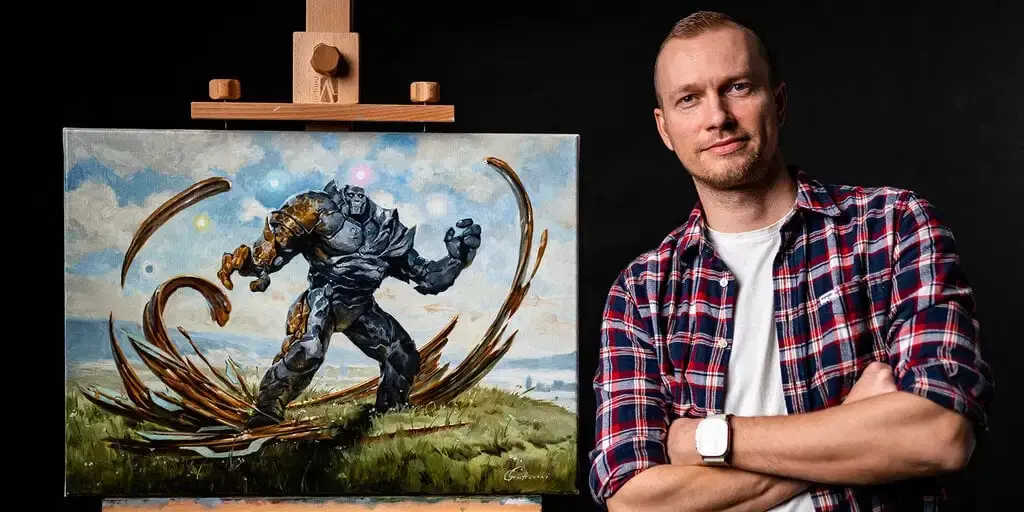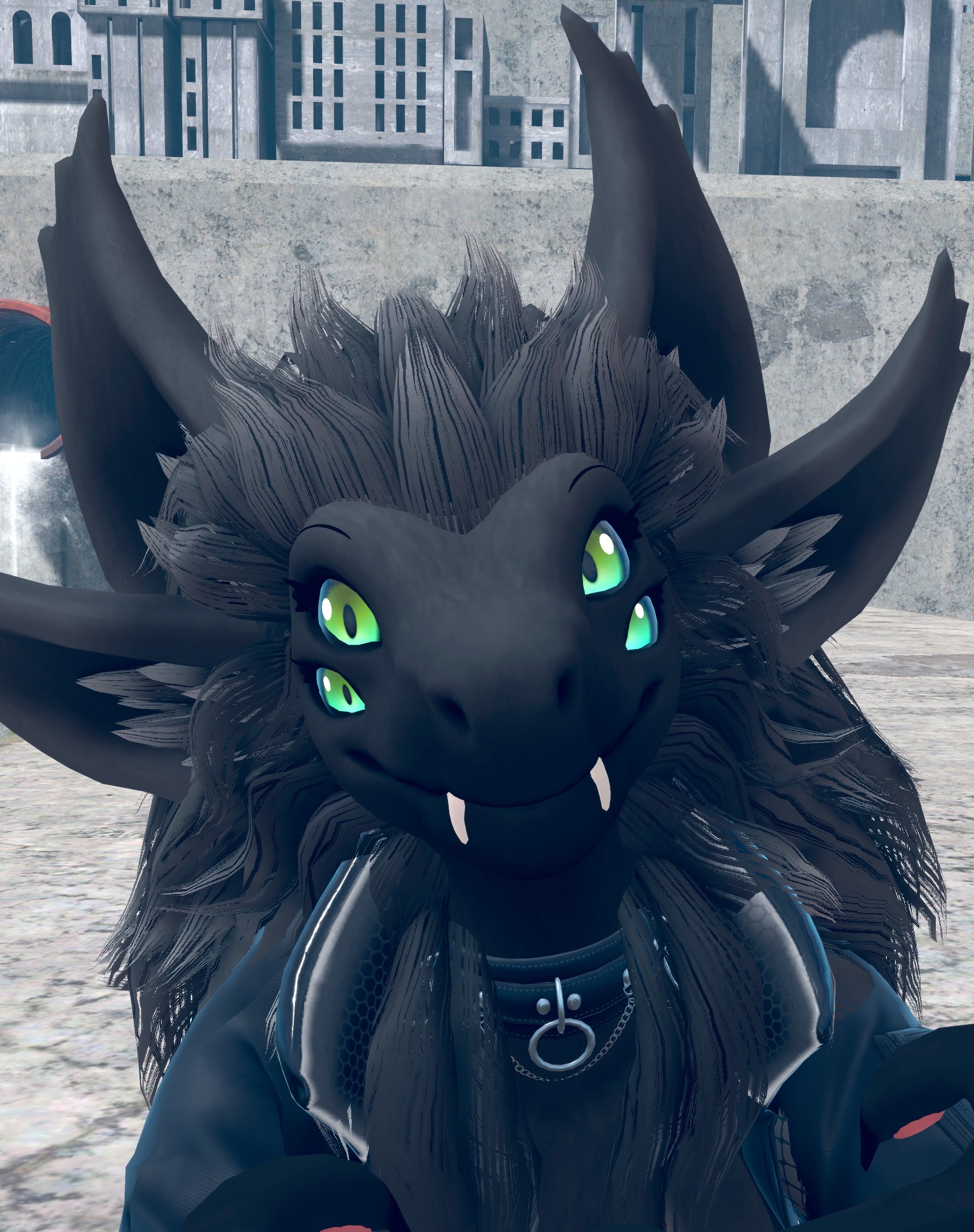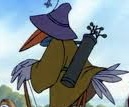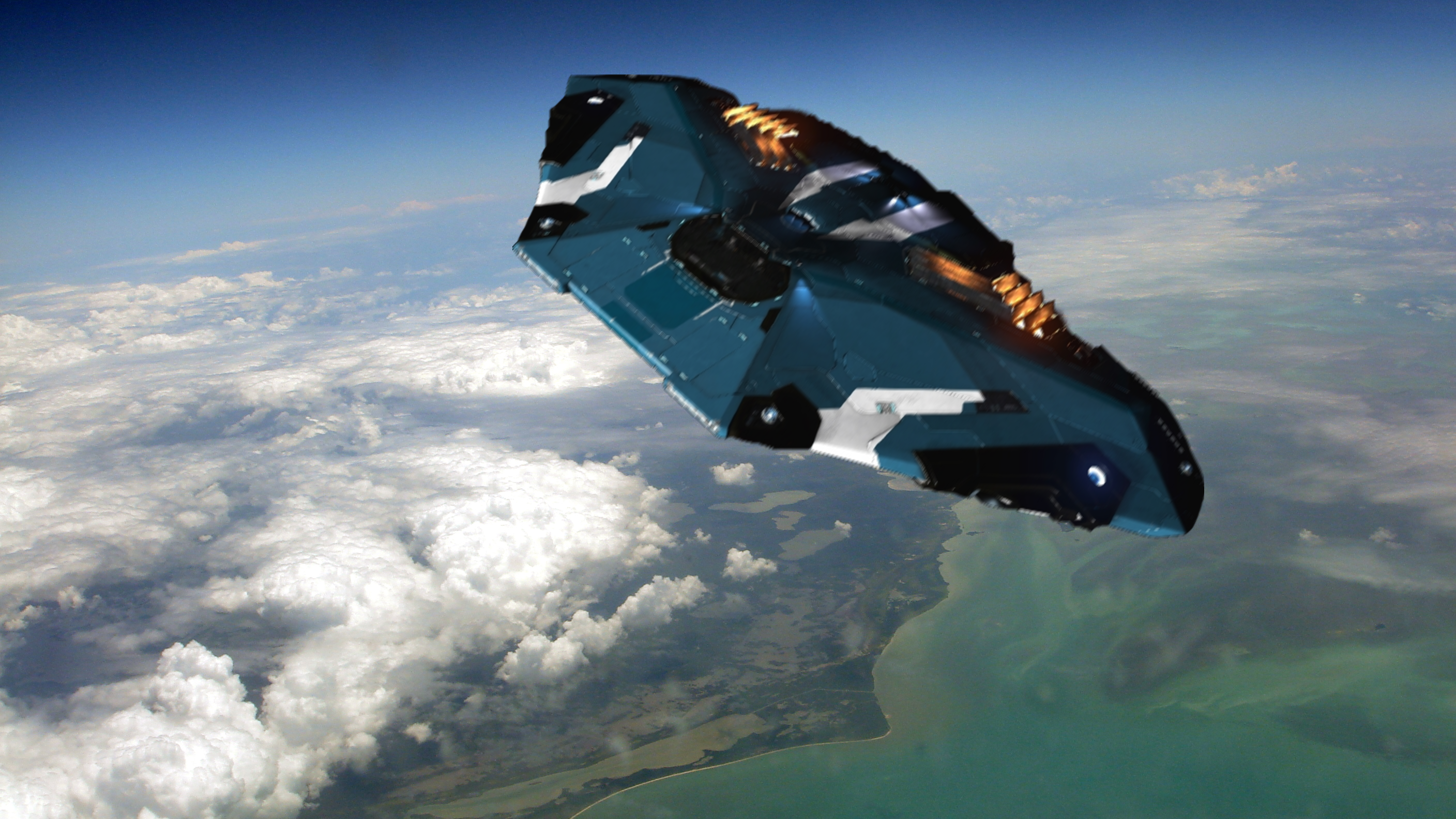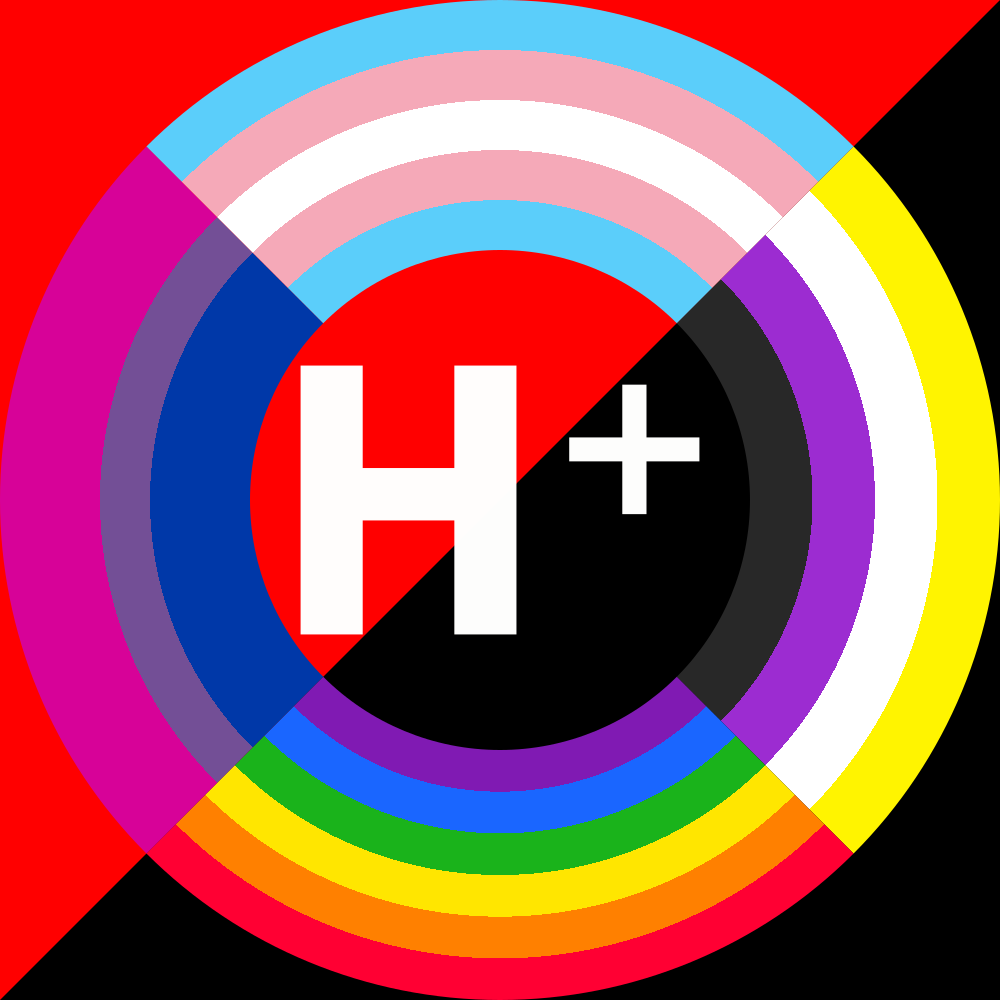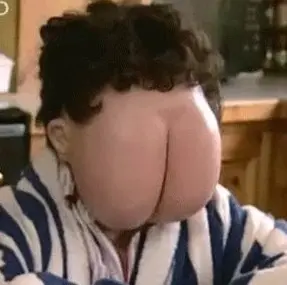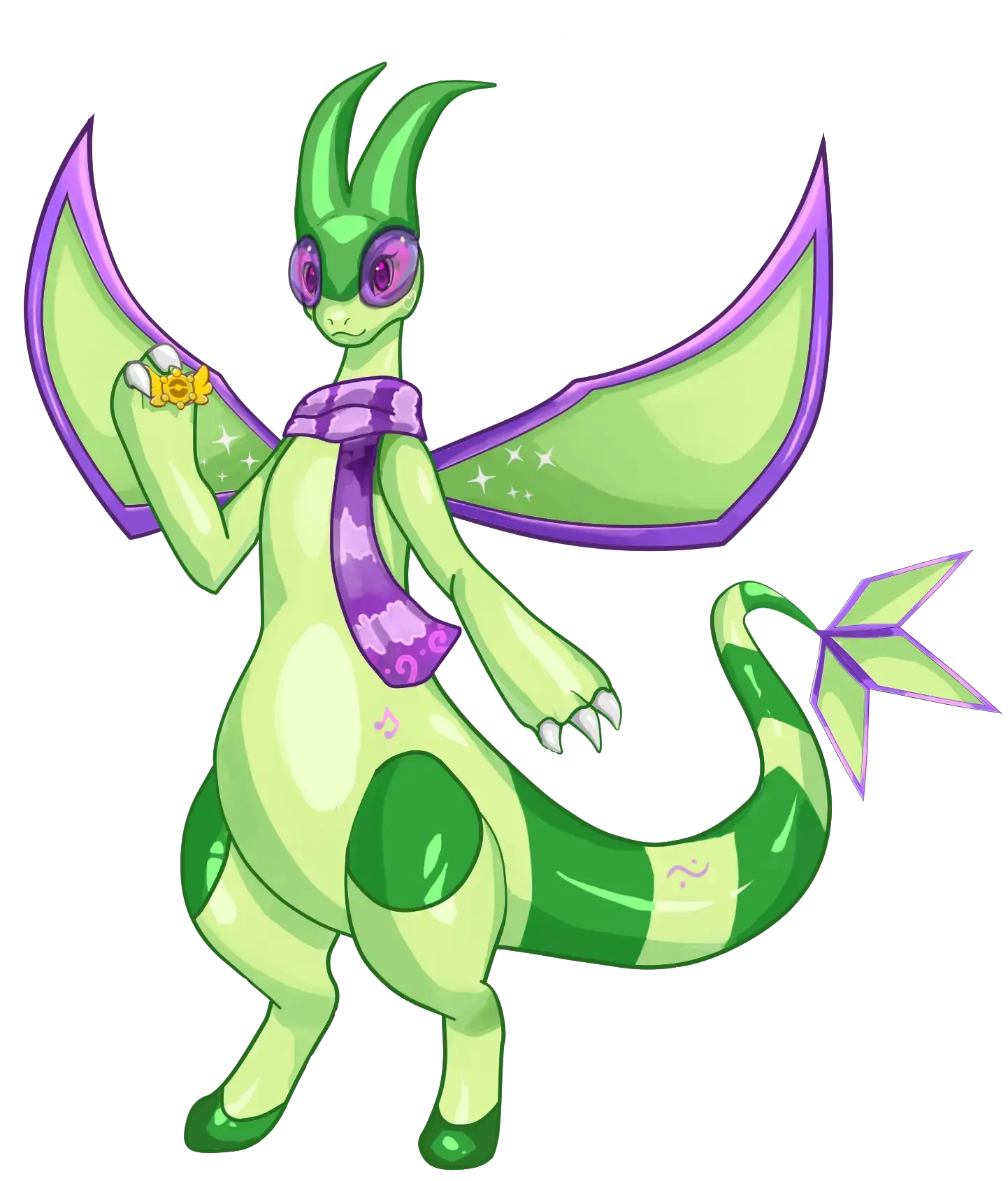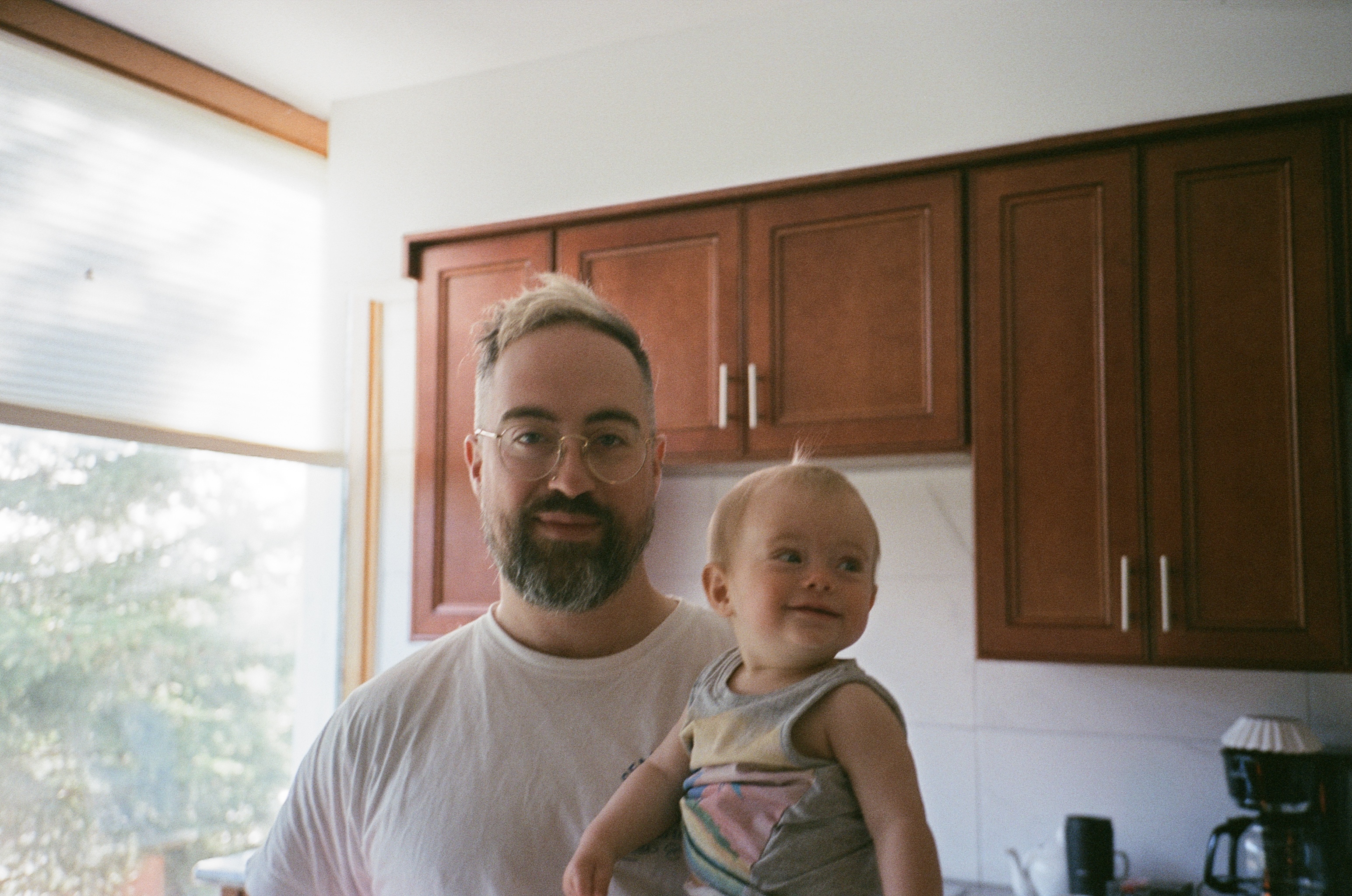Greg Rutkowski, a digital artist known for his surreal style, opposes AI art but his name and style have been frequently used by AI art generators without his consent. In response, Stable Diffusion removed his work from their dataset in version 2.0. However, the community has now created a tool to emulate Rutkowski’s style against his wishes using a LoRA model. While some argue this is unethical, others justify it since Rutkowski’s art has already been widely used in Stable Diffusion 1.5. The debate highlights the blurry line between innovation and infringement in the emerging field of AI art.
deleted by creator
We will probably all have to get used to this soon because I can see the same happening to authors, journalists and designers. Perhaps soon programmers, lawyers and all kinds of other people as well.
It’s interesting how people on Lemmy pretend to be all against big corporations and capitalism and then they happily indulge in the process of making artists jobless becaus “Muh technology cool!”. I don’t know the English word to describe this situation. In German I would say “Tja…”
Just as quickly as people disregard the human art enjoyer, who now has access to a powerful tool to create art undreamed of a year ago.
I have found over the years that forums that claim to be about various forms of art are almost always really about the artists that make that art, and have little to no regard for the people who are there just for the art itself. The AI art thing is just the latest and most prominent way of revealing this.
Well said. Copyright is whatever, but the disrespect shown here is remarkable.
what I’m getting from all the AI stuff is the people in charge and the people that use it are scumbags
Pretty much. There are ways of using it that most artists would be okay with. Most of the people using it flat out refuse to use it like that though.
Edit: To expand on this:
Most artists would be okay with AI art being used as reference material, inspiration, assisting with fleshing out concepts (though you should use concept artists for that in a big production), rapid prototyping and whatnot. Most only care that the final product is at least mostly human-made.
Artists generally want you to actually put effort into what you’re making because, at the end of the day, typing a prompt into stable diffusion has more in common with receiving a free commission from an artist than it has with actually being an artist. If you’re going to claim that something AI had a hand in as being your art, then you need to have done the majority of the work on it yourself.
The most frustrating thing to me, however, is that there are places in art that AI could participate in which would send artists over the moon, but it’s not flashy so no one seems to be working on making AI in those areas.
Most of what I’m personally familiar with has to do with 3d modeling, and in that discipline, people would go nuts if you released an AI tool that could do the UV work for you. Messing with UVs can be very tedious and annoying, to the point where most artists will just use a tool using conventional algorithms to auto-unwrap and pack UVs, and then call it a day, even if they’re not great.
Another area is in rigging and weight painting. In order to animate a model, you have to rig it to a skeleton (unless you’re a masochist or trying to make a game accurate to late 90s-early 00s animation), paint the bone weights (which bones affect which polygons, and by how much), add constraints, etc. Most 3d modelers would leap at the prospect of having high-quality rigging and UVs done for them at the touch of a button. However, again, because it’s not flashy to the general public, no one’s put any effort into making an AI that can do that (afaik at least).
Finally, even if you do use an AI in ways that most artists would accept as valid, you’ll still have to prove it because there are so many people who put a prompt into stable diffusion, do some minor edits to fix hands (in older version), and then try to pass it off as their own work.
Sadly, AI isn’t as good with sparse data like vertices and bones, so most attempts to use AI on 3D stuff is via NERFs, which is closer to a “photo” you can walk around in than to an actual 3D scene.
Welcome to the wonderful world of the silicon valley tech era! Everything must be profitable at all costs! Everything must steal every tiny fact about you! Everything must include ! Everything must go through enshittification!
my take on the subject, as someone who worked both in design and arts, and tech, is that the difficulty in discussing this is more rooted on what is art as opposed to what is theft
we mistakingly call illustrator/design work as art work. art is hard to define, but most would agree it requires some level of expressiveness that emanates from the artist (from the condition of the human existence, to social criticism, to beauty by itself) and that’s what makes it valuable. with SD and other AIs, the control of this aspect is actually in the hands of the AI illustrator (or artist?)
whereas design and illustration are associated with product development and market. while they can contain art in a way, they have to adhere to a specific pipeline that is generally (if not always) for profit. to deliver the best-looking imagery for a given purpose in the shortest time possible
designers and illustrators were always bound to be replaced one way or a another, as the system is always aiming to maximize profit (much like the now old discussions between taxis and uber). they have all the rights to whine about it, but my guess is that this won’t save their jobs. they will have to adopt it as a very powerful tool in their workflow or change careers
on the other hand, artists that are worried, if they think the worth of their art lies solely in a specific style they’ve developed, they are in for an epiphany. they might soon realise they aren’t really artists, but freelance illustrators. that’s also not to mention other posts stating that we always climb on the shoulders of past masters - in all areas
both artists and illustrators that embrace this tool will benefit from it, either to express themselves quicker and skipping fine arts school or to deliver in a pace compatible with the market
all that being said I would love to live in a society where people cared more about progress instead of money. imagine artists and designers actively contributing to this tech instead of wasting time talking fighting over IP and copyright…
While some argue this is unethical, others justify it since Rutkowski’s art has already been widely used in Stable Diffusion 1.5.
What kind of argument is that supposed to be? We’ve stolen his art before so it’s fine? Dickheads. This whole AI thing is already sketchy enough, at least respect the artists that explicitly want their art to be excluded.
His art was not “stolen.” That’s not an accurate word to describe this process with.
It’s not so much that “it was done before so it’s fine now” as “it’s a well-understood part of many peoples’ workflows” that can be used to justify it. As well as the view that there was nothing wrong with doing it the first time, so what’s wrong with doing it a second time?
Yes, it was.
One human artist can, over a life time, learn from a few artists to inform their style.
These AI setups are telling ALL the art from ALL the artists and using them as part of a for profit business.
There is no ethical stance for letting billion dollar tech firms hoover up all the art ever created to the try and remix it for profit.
No, it wasn’t. Theft is a well-defined word. When you steal something you take it away from them so that they don’t have it any more.
It wasn’t even a case of copyright violation, because no copies of any of Rutkowski’s art were made. The model does not contain a copy of any of the training data (with an asterisk for the case of overfitting, which is very rare and which trainers do their best to avoid). The art it produces in Rutkowski’s style is also not a copyright violation because you can’t copyright a style.
There is no ethical stance for letting billion dollar tech firms hoover up all the art ever created to the try and remix it for profit.
So how about the open-source models? Or in this specific instance, the guy who made a LoRA for mimicking Rutkowski’s style, since he did it free of charge and released it for anyone to use?
Yes copies were made. The files were downloaded, one way or another (even as a hash, or whatever digital asset they claim to translate them into) then fed to their machines.
If I go into a Ford plant, take pictures of their equipment, then use those to make my own machines, it’s still IP theft, even if I didn’t walk out with the machine.
Make all the excuses you want, you’re supporting the theft of other people’s life’s work then trying to claim it’s ethical.
Yes copies were made. The files were downloaded, one way or another (even as a hash, or whatever digital asset they claim to translate them into) then fed to their machines.
They were put on the Internet for that very purpose. When you visit a website and view an image there a copy of it is made in your computer’s memory. If that’s a copyright violation then everyone’s equally boned. When you click this link you’re doing exactly the same thing.
Here is where a rhethorical sleight of hand is used by AI proponents.
It’s displayed for people’s appreciation. AI is not people, it is a tool. It’s not entitled to the same rights as people, and the model it creates based on artists works is itself a derivative work.
Even among AI proponents, few believe that the AI itself is an autonomous being who ought to have rights over their own artworks, least of all the AI creators.
I use tools such as web browsers to view art. AI is a tool too. There’s no sleight of hand, AI doesn’t have to be an “autonomous being.” Training is just a mechanism for analyzing art. If I wrote a program that analyzed pictures to determine what the predominant colour in them was that’d be much the same, there’d be no problem with me running it on every image I came across on a public gallery.
By that logic I can sell anything I download from the web while also claiming credit for it, right?
Downloading to view != downloading to fuel my business.
No, and that’s such a ridiculous leap of logic that I can’t come up with anything else to say except no. Just no. What gave you that idea?
No, but you can download Rutkovski’s art, learn from it how to paint in his exact style and create art in that style.
Which is exactly what the image generation AIs do. They’re perhaps just a bit too good at it, certainly way better than an average human.
Which makes it complicated and morally questionable depending on how exactly you arrive at the model and what you do with it, but you can’t definitively say it’s copyright infringement.
For disclosure I am a former member of the American Photographic Artists/Advertising Photographers of America, and I have works registered at the United States Copyright Office.
When we put works in our online portfolio, send mailers or physical copies of our portfolios we’re doing it as promotional works. There is no usage license attached to it. If loaded into memory for personal viewing, that’s fine since its not a commercial application nor violating the intent of that specific release: viewing for promotion.
Let’s break down your example to help you understand what is actually going on. When we upload our works to third party galleries there is often a clause in the terms of service which states the artist uploading to the site grants a usage license for distribution and displaying of the image. Let’s look at Section 17 of ArtStation’s Terms of Service:
- License regarding Your Content
Your Content may be shared with third parties, for example, on social media sites to promote Your Content on the Site, and may be available for purchase through the Marketplace. You hereby grant royalty-free, perpetual, world-wide, licenses (the “Licenses”) to Epic and our service providers to use, copy, modify, reformat and distribute Your Content, and to use the name that you provide in association with Your Content, in connection with providing the Services; and to Epic and our service providers, members, users and licensees to use, communicate, share, and display Your Content (in whole or in part) subject to our policies, as those policies are amended from time-to-time
This is in conjunction with Section 16’s opening line:
- Ownership
As between you and Epic, you will retain ownership of all original text, images, videos, messages, comments, ratings, reviews and other original content you provide on or through the Site, including Digital Products and descriptions of your Digital Products and Hard Products (collectively, “Your Content”), and all intellectual property rights in Your Content.
So when I click your link, I’m not engaging in a copyright violation. I’m making use of ArtStation’s/Epic’s license to distribute the original artist’s works. When I save images from ArtStation that license does not transfer to me. Meaning if I were to repurpose that work it could be a copyright violation depending on the usage the artist agrees to. Established law states that I hold onto the rights of my work and any usage depends on what I explicitly state and agree to; emphasis on explicitly because the law will respect my terms and compensation first, and your intentions second. For example, if a magazine uses my images for several months without a license, I can document the usage time frame, send them an invoice, and begin negotiating because their legal team will realize that without a license they have no footing.
- Yes, this also applies to journalism as well. If you’ve agreed to let a news outlet use your works on a breaking story for credit/exposure, then you provided a license for fair compensation in the form of credit/exposure.
I know this seems strange given how the internet freely transformed works for decades without repercussions. But as you know from sites like YouTube copyright holders are not a fan of people repurposing their works without a mutually agreed upon terms in the form of a license. If you remember the old show Mystery Science Theater 3000, they operated in the proper form: get license, transform work, commercialize. In the case of ArtStation, the site agrees to provide free hosting in compensation for the artist providing a license to distribute the work without terms for monetization unless agreed upon through ArtStation’s marketplace. At every step, the artist’s rights to their work is respected and compensated when the law is applied.
If all this makes sense and we look back at AI art, well…
Meaning if I were to repurpose that work it could be a copyright violation depending on the usage the artist agrees to.
Training an AI doesn’t “repurpose” that work, though. The AI learns concepts from it and then the work is discarded. No copyrighted part of the work remains in the AI’s model. All that verbiage doesn’t really apply to what’s being done with the images when an AI trains on them, they are no longer being “used” for anything at all after training is done. Just like when a human artist looks at some reference images and then creates his own original work based on what he’s learned from them.
Copies that were freely shared for the purpose of letting anyone look at them.
Do you think it’s copyright infringement to go to a website?
Typically, ephemeral copies that aren’t kept for a substantial period of time aren’t considered copyright violations, otherwise viewing a website would be a copyright violation for every image appearing on that site.
Downloading a freely published image to run an algorithm on it and then deleting it without distribution is basically the canonical example of ephemeral.
Its what you do with the copies thats the problem, not the physical act of copying.
One human artist can, over a life time, learn from a few artists to inform their style.
These AI setups […] ALL the art from ALL the artists
So humans are slow and inefficient, what’s new?
First the machines replaced hand weavers, then ice sellers went bust, all the calculators got sacked, now it’s time for the artists.
There is no ethical stance for letting billion dollar tech firms hoover up all the art ever created to the try and remix it for profit.
We stand on the shoulders of generations of unethical stances.
“other people were bad so I should be bad to.”
Cool.
pirating photoshop is a well-understood part of many peoples’ workflows. that doesn’t make it legal or condoned by adobe
I don’t know what this has to do with anything. Nothing was “pirated”, either.
i’m not making a moral comment on anything, including piracy. i’m saying “but it’s part of my established workflow” is not an excuse for something morally wrong.
only click here if you understand analogy and hyperbole
if i say “i can’t write without kicking a few babies first”, it’s not an excuse to keep kicking babies. i just have to stop writing, or maybe find another workflow
The difference is that kicking babies is illegal whereas training and running an AI is not. Kind of a big difference.
did you click the thing saying that you understand analogies?
You’re using an analogy as the basis for an argument. That’s not what analogies are for. Analogies are useful explanatory tools, but only within a limited domain. Kicking a baby is not the same as creating an artwork, so there are areas in which they don’t map to each other.
You can’t dodge flaws in your argument by adding a “don’t respond unless you agree with me” clause on your comment.
His work was used in a publicly available product without license or compensation. Including his work in the training dataset was, to the online vernacular use of the word, piracy.
They violated his copyright when they used his work to make their shit.
The product does not contain his work. So no copying was done, therefore no “piracy.”
Not at the point of generation, but at the point of training it was. One of the sticking points of AI for artists is that their developers didn’t even bother to seek permission. They simply said it was too much work and crawled artists’ galleries.
Even publicly displayed art can only be used for certain previously-established purposes. By default you can’t use them for derivative works.
At the point of training it was viewing images that the artists had published in a public gallery. Nothing pirated at that point either. They don’t need “permission” to do that, the images are on display.
Learning from art is one of the previously-established purposes you speak of. No “derivative work” is made when an AI trains a model, the model does not contain any copyrightable part of the imagery it is trained on.
Bring publicly viewable doesn’t make them public domain. Bring able to see something doesn’t give you the right to use it for literally any other reason.
Full stop.
My gods, you’re such an insufferable bootlicking fanboy of bullshit code jockies. Make a good faith effort to actually understand why people dislike these exploitative assholes who are looking to make a buck off of other people’s work for once, instead of just reflexively calling them all phillistines who “just don’t understand”.
Some of us work on machine learning systems for a living. We know what they are and how they work, and they’re fucking regurgitation machines. And people deserve to have control over whether we use their works in our regurgitation machines.
Of course they need permission to process images. No computer system can merely “view” an image without at least creating a copy for temporary use, and the purposes for which that can be done are strictly defined. Doing whatever you want just because you have access to the image is often copyright infringement.
People have the right to learn from images available publicly for personal viewing. AI is not yet people. Your whole argument relies on anthropomorphizing a tool, but it wouldn’t even be able to select images to train its model without human intervention, which is done with the intent to replicate the artist’s work.
I’m not one to usually bat for copyright but the disregard AI proponents have for artists’ rights and their livelihood has gone long past what’s acceptable, like the article shows.
If I run an image from the web through a program that generates a histogram of how bright its pixels are, am I suddenly a dirty pirate?
They were not used for derivative works. The AI’s model produced by the training does not contain any copyrighted material.
If you click this link and view the images there then you are just as much a “pirate” as the AI trainers.
The models themselves are the derivative works. Those artists’ works were copied and processed to create that model. There is a difference between a person viewing a piece of work and putting that work to be processed through a system. The way copyright works as defined, being allowed to view a work is not the same as being allowed to use it in any way you see fit. It’s also innacurate to speak of AIs as if they have the same abilities and rights as people.
Was he paid for his art to be included?
no one’s art is being “stolen”. you’re mistaken.
That’s true, but only in the sense that theft and copyright infringement are fundamentally different things.
Generating stuff from ML training datasets that included works without permissive licenses is copyright infringement though, just as much as simply copying and pasting parts of those works in would be. The legal definition of a derivative work doesn’t care about the techological details.
(For me, the most important consequence of this sort of argument is that everything produced by Github Copilot must be GPL.)
That’s incorrect in my opinion. AI learns patterns from its training data. So do humans, by the way. It’s not copy-pasting parts of image or code.
At the heart of copyright law is the intent. If an artist makes something, someone can’t just come along and copy it and resell it. The intent is so that artists can make a living for their innovation.
AI training on copyrighted images and then reproducing works derived from those images in order to compete with those images in the same style breaks the intent of copyright law. Equally, it does not matter if a picture is original. If you take an artist’s picture and recreate it with pixel art, there have already been cases where copyright infringement settlements have been made in favor of the original artist. Despite the original picture not being used at all, just studied. Mile’s David Kind Of Bloop cover art.
You’re correct in your description of what a derivative work is, but this part is mistaken:
The intent is so that artists can make a living for their innovation.
The intent is “to promote the progress of science and the useful arts” so that, in the long run, the Public Domain is enriched with more works than would otherwise exist if no incentive were given. Allowing artists to make a living is nothing more than a means to that end.
It promotes progress by giving people the ability to make the works. If they can’t make a living off of making the works then they aren’t going to do it as a job. Thus yes, the intent is so that artists can make a living off of their work so that more artists have the ability to make the art. It’s really that simple. The intent is so that more people can do it. It’s not a means to the end, it’s the entire point of it. Otherwise, you’d just have hobbyists contributing.
I like what you’re saying so I’m not trying to be argumentative, but to be clear copyright protections don’t simply protect those who make a living from their productions. You are protected by them regardless of whether you intend to make any money off your work and that protection is automatic. Just to expand upon what @grue was saying.
AI doesn’t “learn” anything, it’s not even intelligent. If you show a human artwork of a person they’ll be able to recognize that they’re looking at a human, how their limbs and expression works, what they’re wearing, the materials, how gravity should affect it all, etc. AI doesn’t and can’t know any of that, it just predicts how things should look based on images that have been put in it’s database. It’s a fancy Xerox.
Why do people who have no idea how some thing works feel the urge to comment on its working? It’s not just AI, it’s pretty much everything.
AI does learn, that’s the whole shtick and that’s why it’s so good at stuff computers used to suck at. AI is pretty much just a buzzword, the correct abbreviation is ML which stands for Machine Learning - it’s even in the name.
AI also recognizes it looks at a human! It can also recognize what they’re wearing, the material. AI is also better in many, many things than humans are. It also sucks compared to humans in many other things.
No images are in its database, you fancy Xerox.
And I wish that people who didn’t understand the need for the human element in creative endeavours would focus their energy on automating things that should be automated, like busywork, and dangerous jobs.
If the prediction model actually “learned” anything, they wouldn’t have needed to add the artist’s work back after removing it. They had to, because it doesn’t learn anything, it copies the data it’s been fed.
Just because you repeat the same thing over and over it doesn’t become truth. You should be the one to learn, before you talk. This conversation is over for me, I’m not paid to convince people who behave like children of how things they’re scared of work.
It’s actually not copyright infringement at all.
Edit: and even if it was, copyright infringement is a moral right, it’s a good thing. copyright is theft.
It’s likely copyright infringement but that’s for the courts to decide, not you or me. Additionally, “copyright infringement is a moral right” seems fairly wrong. Copyright laws currently are too steep and I can agree with that but if I make a piece of art like a book, video game, or movie, do I not deserve to protect it in order to get money? I’d argue that because we live in a capitalistic society so, yes, I deserve to get paid for the work I did. If we lived in a better society that met the basic needs (or even complex needs) of every human then I can see copyright laws being useless.
At the end of the day, the artists just want to be able to afford to eat, play games, and have shelter. Why in the world is that a bad thing in our current society? You can’t remove copyright law without first removing capitalism.
Additionally, “copyright infringement is a moral right” seems fairly wrong. Copyright laws currently are too steep and I can agree with that but if I make a piece of art like a book, video game, or movie, do I not deserve to protect it in order to get money? I’d argue that because we live in a capitalistic society so, yes, I deserve to get paid for the work I did.
No. And it’s not just me saying that; the folks who wrote the Copyright Clause (James Madison and Thomas Jefferson) would disagree with you, too.
The natural state of a creative work is for it to be part of a Public Domain. Ideas are fundamentally different from property in the sense that property’s value comes from its exclusive use by its owner, wheras an idea’s value comes from spreading it, i.e., giving it away to others.
Here’s how Jefferson described it:
stable ownership is the gift of social law, and is given late in the progress of society. it would be curious then if an idea, the fugitive fermentation of an individual brain, could, of natural right, be claimed in exclusive and stable property. if nature has made any one thing less susceptible, than all others, of exclusive property, it is the action of the thinking power called an Idea; which an individual may exclusively possess as long as he keeps it to himself; but the moment it is divulged, it forces itself into the possession of every one, and the reciever cannot dispossess himself of it. it’s peculiar character too is that no one possesses the less, because every other possesses the whole of it. he who recieves an idea from me, recieves instruction himself, without lessening mine; as he who lights his taper at mine, recieves light without darkening me. that ideas should freely spread from one to another over the globe, for the moral and mutual instruction of man, and improvement of his condition, seems to have been peculiarly and benvolently designed by nature, when she made them, like fire, expansible over all space, without lessening their density in any point; and like the air in which we breathe, move, and have our physical being, incapable of confinement, or exclusive appropriation. inventions then cannot in nature be a subject of property. society may give an exclusive right to the profits arising from them as an encouragement to men to pursue ideas which may produce utility. but this may, or may not be done, according to the will and convenience of the society, without claim or complaint from any body.
Thus we see the basis for the rationale given in the Copyright Clause itself: “to promote the progress of science and the useful arts,” which is very different from creating some kind of entitlement to creators because they “deserve” it.
The true basis for copyright law in the United States is as a utilitarian incentive to encourage the creation of more works - a bounty for creating. Ownership of property is a natural right which the Constitution pledges to protect (see also the 4th and 5th Amendments), but the temporary monopoly called copyright is merely a privilege granted at the pleasure of Congress. Essentially, it’s a lease from the Public Domain, for the benefit of the Public. It is not an entitlement; what the creator of the work “deserves” doesn’t enter into it.
And if the copyright holder abuses his privilege such that the Public no longer benefits enough to be worth it, it’s perfectly just and reasonable for the privilege to be revoked.
At the end of the day, the artists just want to be able to afford to eat, play games, and have shelter. Why in the world is that a bad thing in our current society? You can’t remove copyright law without first removing capitalism.
This is a bizarre, backwards argument. First of all, a government-granted monopoly is the antethesis of the “free market” upon which capitalism is supposedly based. Second, granting of monopolies is hardly the only way to accomplish either goal of “promoting the progress of science and the useful arts” or of helping creators make a living!
Thus we see the basis for the rationale given in the Copyright Clause itself: “to promote the progress of science and the useful arts,” which is very different from creating some kind of entitlement to creators because they “deserve” it.
… You realize the reason it promotes progress is because it allows the creators to get paid for it, right? It’s not “they deserve it” it’s “they need to eat and thus they aren’t going to do it unless they make money.” Which is exactly my argument.
Ownership of property is a natural right which the Constitution pledges to protect (see also the 4th and 5th Amendments), but the temporary monopoly called copyright is merely a privilege granted at the pleasure of Congress
It’s a silly way to put that since the “privilege granted” is given in to Congress in the Constitution.
Overall though, you are referencing a 300-year-old document like it means something. The point comes down to people needing to eat in a capitalistic society.
This is a bizarre, backwards argument. First of all, a government-granted monopoly is the antethesis of the “free market” upon which capitalism is supposedly based.
Capitalism isn’t really based on a free market and never has been in practice.
Second, granting of monopolies is hardly the only way to accomplish either goal of “promoting the progress of science and the useful arts” or of helping creators make a living!
Sure but first enact those changes then try to change or break copyright. Don’t take away the only current way for artists to make money then say “Well, the system should be different.” You are causing people to starve at that point.
Edit: …copyright infringement is a moral right, it’s a good thing. copyright is theft.
Except when it’s being used to enforce copyleft.
Aside from all the artists whose work was fed into the AI learning models without their permission. That art has been stolen, and is still being stolen. In this case very explicitly, because they outright removed his work, and then put it back when nobody was looking.
Let me give you a hypothetical that’s close to reality. Say an artist gets very popular, but doesn’t want their art used to teach AI. Let’s even say there’s even legislation that prevents all this artist’s work from being used in AI.
Now what if someone else hires a bunch of cheap human artists to produce works in a style similar to the original artist, and then uses those works to feed the AI model? Would that still be stolen art? And if so, why? And if not, what is this extra degree of separation changing? The original artist is still not getting paid and the AI is still producing works based on their style.
Comic book artists get in shit for tracing other peoples’ work all the time. Look up Greg Land. It’s shitty regardless of whether it’s a person doing it directly, or if someone built software to do it for them.
The real issue here is the transfer of power away from the artist. This artist has presumably spent years and years perfecting his craft. Those efforts are now being used to line someone else’s pockets, in return for no compensation and a diminishment in the financial value of his work, and, by the sounds of it, little say in the matter either. That to me seems very unethical.
What blurry line? An artist doesn’t what his art stolen from him. Seems pretty cut and dry to me.
Nothing was stolen.
Drawing inspiration from someone else by looking at their work has been around for centuries.
Imagine if the Renaissance couldn’t happen because artists didn’t want their style stolen.
If I look at someone’s paintings, then paint something in a similar style did I steal their work? Or did I take inspiration from it?
No, you used it to inform your style.
You didn’t drop his art on to a screenprinter, smash someone else’s art on top, then try to sell t-shirts.
Trying to compare any of this to how one, individual, human learns is such a wildly inaccurate way to justify stealing a someone’s else’s work product.
If it works correctly it’s not a screenprinter, it’s something unique as the output.
The fact that folks can identify the source of various parts of the output, and that intact watermarks have shown up, shows that it doesn’t work like you think it does.
Does that mean the AI is not smart enough to remove watermarks, or that it’s so smart it can reproduce them?
It means that it’s stupid enough that it reproduces them - poorly.
It’s not smart or stupid. It does what it’s been trained on, nothing more.
LLMs and directly related technologies are not AI and possess no intelligence or capability to comprehend, despite the hype. So, they are absolutely the former, though it’s rather like a bandwagon sort of thing (x number of reference images had a watermark, so that’s what the generated image should have).
LLMs […] no intelligence or capability to comprehend
That’s debatable. LLMs have shown emergent behaviors aside from what was trained, and they seem to be capable of comprehending relationships between all sorts of tokens, including multi-modal ones.
Anyway, Stable diffusion is not an LLM, it’s more of a “neural network hallucination machine” with some cool hallucinations, that sometimes happen to be really close to some or parts of the input data. It still needs to be “smart” enough to decompose the original data into enough and the right patterns, that it can reconstruct part of the original from the patterns alone.
They can’t, and “intact” watermarks don’t show up. You’re the one who is misunderstanding how this works.
When a pattern is present very frequently the AI can learn to imitate it, resulting in things that closely resemble known watermarks. This is called “overfitting” and is avoided as much as possible. But even in those cases, if you examine the watermark-like pattern closely you’ll see that it’s usually quite badly distorted and only vaguely watermark-like.
Yes, because “imitate” and “copy” are different things when stealing from someone.
I do understand how it works, the “overfitting” was just laying clear what it does. It copies but tries to sample things in a way that won’t look like clear copies. It had no creativity, it is trying to find new ways of making copies.
If any of this was ethical, the companies doing it would have just asked for permission. That they didn’t says a everything you need to know.
I don’t usually have these kinds discussions anymore, I got tired of conversations like this back in 2016, when it became clear that people will go to the ends of the earth to justify unethical behavior as long as the people being hurt by it are people they don’t care about.
And we’re back to you calling it “stealing”, which it certainly is not. Even if it was copyright violation, copyright violation is not stealing.
You should try to get the basic terminology right, at the very least.
I don’t fully understand how this works, but if they’ve created a way to replicate his style that doesn’t involve using his art in the model, how is it problematic? I understand not wanting models to be trained using his art, but he doesn’t have exclusive rights to the art style, and if someone else can replicate it, what’s the problem?
This is an honest question, I don’t know enough about this topic to make a case for either side.
Do you know how they recreated his style? I couldn’t find such information or frankly have enough understanding to know how.
But if they either use his works directly or works created by another GAI with his name/style in the prompt, my personal feeling is that would still be unethical, especially if they charge money to generate his style of art without compensating him.
Plus, I find that the opt-out mentality really creepy and disrespectful
“If he contacts me asking for removal, I’ll remove this.” Lykon said. “At the moment I believe that having an accurate immortal depiction of his style is in everyone’s best interest.”
they charge money to generate his style of art without compensating him.
That’s really the big thing, not just here but any material that’s been used to train on without permission or compensation. The difference is that most of it is so subtle it can’t be picked out, but an artist style is obviously a huge parameter since his name was being used to call out those particular training aspects during generations. It’s a bit hypocritical to say you aren’t stealing someone’s work when you stick his actual name in the prompt. It doesn’t really matter how many levels the art style has been laundered, it still originated from him.
It is unconditionally impossible to own an artistic style. “Stealing a style” cannot be done.
Is drawing Mickey Mouse in a new pose copying the style or copying Mickey Mouse?
Just wait until you can copywrite a style. Guess who will end up owning all the styles.
Spoiler, it’s wealthy companies like Disney and Warner. Oh you used cross hatching? Disney owns the style now you theif.
Copyright is fucked. Has been since before the Mickey mouse protection act. Our economic system is fucked. People would rather fight each other and new tools instead of rallying against the actual problem, and it’s getting to me.
You’re right, copyright won’t fix it, copyright will just enable large companies to activate more of their work extract more from the creative space.
But who will benefit the most from AI? The artists seem to be getting screwed right now, and I’m pretty sure that Hasbro and Disney will love to cut costs and lay off artists as soon as this blows over.
Technology is capital, and in a capitalist system, that goes to benefit the holders of that capital. No matter how you cut it, laborers including artists are the ones who will get screwed.
Me, I’ll benefit the most. I’ve been using a locally running instance of the free and open source AI software Stable Diffusion to generate artwork for my D&D campaigns and they’ve never looked more beautiful!
And yet the artist’s name is used to push the weights towards pictures in their style. I don’t know what the correct semantics are for it, nor the legalities. That’s part of the problem, the tech is ahead of our laws, as is usually the case.
It’s only using his name because the person who created the LORA trained it with his name. They could have chosen any other word.
And yet the artist’s name is used to push the weights towards pictures in their style.
That’s not even vaguely new in the world of art.
Imitating style is the core of what art is. It’s absolutely unconditionally protected by copyright law. It’s not even a .01 out of 10 on the scale of unethical. It’s what’s supposed to happen.
The law might not cover this yet, but any law that restricts the fundamental right to build off of the ideas of others that are the core of the entirety of human civilization is unadulterated evil. There is no part of that that could possibly be acceptable to own.
I totally agree with you on protecting the basics of creativity and growth. I think the core issue is using “imitate” here. Is that what the LLM is doing, or is that an anthropomorphism of some sense that there’s intelligence guiding the process? I know it seems like I’m nitpicking things to further my point, but the fact that this is an issue to many even outside artwork says there is a question here of what is and isn’t okay.
Do you know how they recreated his style? I couldn’t find such information or frankly have enough understanding to know how.
I don’t, but another poster noted that it involves using his art to create the LoRA.
Plus, I find that the opt-out mentality really creepy and disrespectful
I don’t know about creepy and disrespectful, but it does feel like they’re saying “I know the artist doesn’t want me to do this, but if he doesn’t specifically ask me personally to stop, I’m going to do it anyway.”
Re: Stolen. Not stolen comments Copyright law as interpreted judges is still being worked out on AI. Stay tuned if it’s defined as stolen or not. But even if the courts decide existing copyright law would define training on artists work as legitimate use. The law can change and it still could swing the way of the artist if congress got involved.
My personal opinion, which may not reflect what happens legally is I hope we all get more control over our data and how it’s used and sold. Wether that’s my personal data like my comments, location or my artistic data like my paintings. I think that would be a better world
Copyright law as interpreted judges is still being worked out on AI. Stay tuned if it’s defined as stolen or not.
You just contradicted yourself in two sentences. Copyright and theft are not the same thing. They are unrelated to each other. When you violate copyright you are not “stealing” anything. This art is not “stolen”, full stop.
“Is copyright infringement theft” is something that had been debated for as long as mp3s were a thing. This is an old argument with lots of material on both sides scattered across the web. I clearly fall on the side of copyright infringement is theft and theft is stealing.
There’s absolutely no debate, legal or otherwise.
Theft, by definition, requires you to deprive someone of something. That simply cannot happen when you copy stuff. That’s why it’s called copyright infringement and not theft.
You can only steal art by physically stealing an art piece - then and only then it’s theft.
What do you mean there is no debate? You’re debating it right now.
Plenty of artists view it as theft when people take their work and use it for their own ends without their permission. Not everyone, sure. But it’s a bit odd to state so emphatically that there is no debate.
The copyright argument is a bad argument against AI art. But there are also good arguments against it.
This person has no idea what machine learning actually is. And they hate such a generic concept on a “gut feeling” and come up with the reasons later?
If you want good reasons to hate AI generated art you won’t find them in this shitty blogpost.
as a counterpoint, when the use-case for the tool is specifically “I want a picture that looks like it was painted by Greg Rutkowski, but I don’t want to pay Greg Rutkowski to paint it for me” that sounds like the sort of scenario that copyright was specifically envisioned to protect against – and if it doesn’t protect against that, it’s arguably an oversight in need of correction. It’s in AI makers and users’ interest to proactively self-regulate on this front, because if they don’t somebody like Disney is going to wade into this at some point with expensive lobbyists, and dictate the law to their own benefit.
That said, it’s working artists like Rutkowski, or friends of mine who scrape together a living off commissioned pieces, that I am most concerned for. Fantasy art like Greg makes, or personal character portraits of the sort you find on character sheets of long-running DnD games or as avatar images on forums like this one, make up the bread and butter of many small-time artists’ work, and those commissions are the ones most endangered by the current state of the art in generative AI. It’s great for would-be patrons that the cost of commissioning a mood piece for a campaign setting or a portrait of their fursona has suddenly dropped to basically zero, but it sucks for artists that their lunch is being eaten by an AI algorithm that was trained by slurping up all their work without compensation or even credit. For as long as artists need to get paid for their work in order to live, that’s inherently anti-worker.
There’s a lot of disagreement here on what is theft, what is art, what is copyright… etc
The main issue people have with AI is fundamentally how is it going to be used? I know there isnt much we can do about it now, and its a shame because there it has so much potential good. Everyone defending AI is making a lot of valid points.
But at the end of the day it is a tool that is going to be misused by the rich and powerful to eliminate hundreds of millions of well paying careers, permanently. MOST well paying jobs in fact, not just artists. What the hell are people supposed to do? How is any of this a good thing?
What the hell are people supposed to do?
Eat the rich :)
More concretely, there are a number of smaller and larger sociopolitical changes that can be fought for. On the smaller side, there’s rethinking the way our society values people and pushing for some kind of UBI, on the larger side there’s shifting to postcapitalist economics and organisation to various degrees .)
But the rich are the ones buying a lot of the art! Who will pay the artists if you eat the people with the money?
Here’s my argument: tough titties. Everything Greg Rutkowski has ever drawn or made has been inspired by other things he has seen and the experiences of his life, and this applies to all of us. Indeed, one cannot usually have experiences without the participation of others. Everyone wants to think they are special, and of course we are to someone, but to everyone no one is special. Since all of our work is based upon the work of everyone who came before us, then all of our work belongs to everyone. So tough fucking titties, welcome to the world of computer science, control c and control v is heavily encouraged.
In that Beatles documentary, Paul McCartney said he thought that once you uttered the words into the microphone, it belonged to everyone. Little did he know how right he actually was.
You think there is a line between innovation and infringement? Wrong, They are the same thing.
And for the record, I’m fine with anyone stealing my art. They can even sell it as their own. Attribution is for the vain.
I think people forget the reality when they take their supposedly brave and oh so altruistic stance of “there should be no copyright”.
When people already know they won’t even have a small chance of getting paid for the art they create, we will run out of artists.
Because most can not afford to learn and practice that craft without getting any form of payment. It will become a very rare hobby of a few decadent rich people who can afford to learn something like illustration in their free time.
You’re fine with someone stealing your art and selling it?
Greg wants to get paid, remove the threat of poverty from the loss of control and its a nonissue.
Not every human activity deserves compensation
Compensation shouldn’t be an aspect of most human activity.
But every human activity desirable to others deserve compensation. If you want someone to do something for you or make something for you or entertain you then it deserves compensation. The way ads on the internet have trained a lot of people to think that a lot of entertainment et cetera on the internet is free has been a negative for this. But at the same time that ad-supported model does make it more available to people that otherwise couldn’t afford the price of admission. It’s partly democratizing, but it’s also a scourge.
If an image is represented as a network of weighted values describing subtle patterns in the image rather than a traditional grid of pixel color values, is that copy of the image still subject to copyright law?
How much would you have to change before it isn’t? Or if you merged it with another representation, would that change your rights to that image?
It doesn’t matter how you recreate an image, if you recreate someone else’s work that is a violation of copyright.
Stealing someone’s style is a different matter.
AI art is factually not art theft. It is creation of art in the same rough and inexact way that we humans do it; except computers and AIs do not run on meat-based hardware that has an extraordinary number of features and demands that are hardwired to ensure survival of the meat-based hardware. It doesn’t have our limitations; so it can create similar works in various styles very quickly.
Copyright on the other hand is, an entirely different and, a very sticky subject. By default, “All Rights Are Reserved” is something that usually is protected by these laws. These laws however, are not grounded in modern times. They are grounded in the past; before the information age truly began it’s upswing.
Fair use generally encompasses all usage of information that is one or more of the following:
- Educational; so long as it is taught as a part of a recognized class and within curriculum.
- Informational; so long as it is being distributed to inform the public about valid, reasonable public interests. This is far broader than some would like; but it is legal.
- Transformative; so long as the content is being modified in a substantial enough manner that it is an entirely new work that is not easily confused for the original. This too, is far broader than some would like; but it still is legal.
- Narrative or Commentary purposes; so long as you’re not copying a significant amount of the whole content and passing it off as your own. Short clips with narration and lots of commentary interwoven between them is typically protected. Copyright is not intended to be used to silence free speech. This also tends to include satire; as long as it doesn’t tread into defamation territory.
- Reasonable, ‘Non-Profit Seeking or Motivated’ Personal Use; People are generally allowed to share things amongst themselves and their friends and other acquaintances. Reasonable backup copies, loaning of copies, and even reproduction and presentation of things are generally considered fair use.
In most cases AI art is at least somewhat Transformative. It may be too complex for us to explain it simply; but the AI is basically a virtual brain that can, without error or certain human faults, ingest image information and make decisions based on input given to it in order to give a desired output.
Arguably; if I have license or right to view artwork; or this right is no longer reserved, but is granted to the public through the use of the World Wide Web…then the AI also has those rights. Yes. The AI has license to view, and learn from your artwork. It just so happens to be a little more efficient at learning and remembering than humans can be at times.
This does not stop you from banning AIs from viewing all of your future works. Communicating that fact with all who interact with your works is probably going to make you a pretty unpopular person. However; rightsholders do not hold or reserve the right to revoke rights that they have previously given. Once that genie is out of the bottle; it’s out…unless you’ve got firm enough contract proof to show that someone agreed to otherwise handle the management of rights.
In some cases; that proof exists. Good luck in court. In most cases however; that proof does not exist in a manner that is solid enough to please the court. A lot of the time; we tend to exchange, transfer and reserve rights ephemerally…that is in a manner that is not strictly always 100% recognized by the law.
Gee; Perhaps we should change that; and encourage the reasonable adaptation and growth of Copyright to fairly address the challenges of the information age.
deleted by creator
Rutowski, Monet, and Rockwell could also not create without human art.
All creativity is a combination of past creativity.
Even Monet.
Even Shakespeare.
Even Beethoven.
@selzero @raccoona_nongrata @fwygon But human creativity is not ONLY a combination of past creativity. It is filtered through a lifetime of subjective experience and combined knowledge. Two human artists schooled on the same art history can still produce radically different art. Humans are capable of going beyond has been done before.
Before going too deep on AI creation spend some time learning about being human. After that, if you still find statistical averages interesting, go back to AI.
@glenatron @raccoona_nongrata @fwygon
I mean, yes, you are right, but essentially, it is all external factors. They can be lived through external factors, or data fed external factors.
I don’t think there is a disagreement here other than you are placing a lot of value on “the human experience” being an in real life thing rather than a read thing. Which is not even fully true of the great masters. It’s a form of puritan fetishisation I guess.
@selzero @raccoona_nongrata @fwygon I don’t think it’s even contraversial. Will sentient machines ever have an equivalent experience? Very probably. Will they be capable of creating art? Absolutely.
Can our current statistical bulk reincorporation tools make any creative leap? Absolutely not. They are only capable of plagiarism. Will they become legitimate artistic tools? Perhaps, when the people around them start taking artists seriously instead of treating them with distain.
@glenatron @raccoona_nongrata @fwygon
This angle is very similar to a debate going on in the cinema world, with Scorsese famously ranting that Marvel movies are “not movies”
The point being without a directors message being portrayed, these cookie cutter cinema experiences, with algorithmically developed story lines, should not be classified as proper movies.
But the fact remains, we consume them as movies.
We consume AI art as art.
@selzero @glenatron @raccoona_nongrata @fwygon And thousands of people’s creativity is in the Marvel movie, but one person hammering out a prompt on the AI art. They’re still vastly different. Even the most banally corporate movie is still a work of staggering human creativity and _working together_.
Stable diffusion image generators are not.
deleted by creator
Actually. It is necessary. The process of creativity is much much more a synergy of past consumption than we think.
It took 100,000 years to get from cave drawings to Leonard Da Vinci.
Yes we always find ways to draw, but the pinnacle of art comes from a shared culture of centuries.
deleted by creator
A machine will not unilaterally develop an art form, and develop it for 100,000 years.
Yes I agree with this.
However, they are not developing an art form now.
Nor did Monet, Shakespeare, or Beethoven develop an art form. Or develop it for 100,000 years.
So machines cannot emulate that.
But they can create the end product based on past creations, much as Monet, Shakespeare, and Beethoven did.
deleted by creator
Current AI models do not learn the way human brains do. And the way current models learn how do “make art” is very different from how human artists do it. To repeatedly try and recreate the work of other artists is something beginners do. And posting these works online was always shunned in artist communities. You also don’t learn to draw a hand by remembering where a thousand different artists put the lines so it looks like a hand.
It doesn’t change anything you said about copyright law, but current-gen AI is absolutely not “a virtual brain” that creates “art in the same rough and inexact way that we humans do it.” What you are describing is called Artificial General Intelligence, and it simply does not exist yet.
Today’s large language models (like ChatGPT) and diffusion models (like Stable Diffusion) are statistics machines. They copy down a huge amount of example material, process it, and use it to calculate the most statistically probable next word (or pixel), with a little noise thrown in so they don’t make the same thing twice. This is why ChatGPT is so bad at math and Stable Diffusion is so bad at counting fingers – they are not making any rational decisions about what they spit out. They’re not striving to make the correct answer. They’re just producing the most statistically average output given the input.
Current-gen AI isn’t just viewing art, it’s storing a digital copy of it on a hard drive. It doesn’t create, it interpolates. In order to imitate a person’t style, it must make a copy of that person’s work; describing the style in words is insufficient. If human artists (and by extension, art teachers) lose their jobs, AI training sets stagnate, and everything they produce becomes repetitive and derivative.
None of this matters to copyright law, but it matters to how we as a society respond. We do not want art itself to become a lost art.
Current-gen AI isn’t just viewing art, it’s storing a digital copy of it on a hard drive.
This is factually untrue. For example, Stable Diffusion models are in the range of 2GB to 8GB, trained on a set of 5.85 billion images. If it was storing the images, that would allow approximately 1 byte for each image, and there are only 256 possibilities for a single byte. Images are downloaded as part of training the model, but they’re eventually “destroyed”; the model doesn’t contain them at all, and it doesn’t need to refer back to them to generate new images.
It’s absolutely true that the training process requires downloading and storing images, but the product of training is a model that doesn’t contain any of the original images.
None of that is to say that there is absolutely no valid copyright claim, but it seems like either option is pretty bad, long term. AI generated content is going to put a lot of people out of work and result in a lot of money for a few rich people, based off of the work of others who aren’t getting a cut. That’s bad.
But the converse, where we say that copyright is maintained even if a work is only stored as weights in a neural network is also pretty bad; you’re going to have a very hard time defining that in such a way that it doesn’t cover the way humans store information and integrate it to create new art. That’s also bad. I’m pretty sure that nobody who creates art wants to have to pay Disney a cut because one time you looked at some images they own.
The best you’re likely to do in that situation is say it’s ok if a human does it, but not a computer. But that still hits a lot of stumbling blocks around definitions, especially where computers are used to create art constantly. And if we ever hit the point where digital consciousness is possible, that adds a whole host of civil rights issues.
It’s absolutely true that the training process requires downloading and storing images
This is the process I was referring to when I said it makes copies. We’re on the same page there.
I don’t know what the solution to the problem is, and I doubt I’m the right person to propose one. I don’t think copyright law applies here, but I’m certainly not arguing that copyright should be expanded to include the statistical matrices used in LLMs and DPMs. I suppose plagiarism law might apply for copying a specific style, but that’s not the argument I’m trying to make, either.
The argument I’m trying to make is that while it might be true that artificial minds should have the same rights as human minds, the LLMs and DPMs of today absolutely aren’t artificial minds. Allowing them to run amok as if they were is not just unfair to living artists… it could deal irreparable damage to our culture because those LLMs and DPMs of today cannot take up the mantle of the artists they hedge out or pass down their knowledge to the next generation.
-
How do you know human brains don’t work in roughly the same way chatbots and image generators work?
-
What is art? And what does it mean for it to become “lost”?
He literally just explained why.
-
All this proves to me, based on the context from this post, is that people are willing to commit copyright infringement in order to make a machine produce art in a specific style.
It doesn’t say anywhere they used copyrighted art though?
Seems the new model might use art inspired by him, not his art itself.
It’s a moral gray zone. If you add enough freely available works inspired by someone, the model can produce a similar style without using any original works.
Is it still copyright infringement at that point?
Its unlikely that this did not use his work, these models require input data. Even if they took similar art, that would only resolve the issue of Greg himself but would shift it to those other artists. Unless there is some sort of unspoken artistic genealogical purity that prevents artists with similar or inspired styles from having equal claim on their own creations when inspired by another.
It also could be outputs generated from another AI model. But I don’t think people who see ethical problems in this care about the number of steps removed and processing that occurs when the origin is his artwork and it ultimately outputs the same or similar style. The result is what bothers people, no matter how disparate or disconnected the source’s influence is. If the models had simply found the Greg Rutkowski latent space through random chance people would still take issue with it.
The ability and willingness to generate images in a style associated with a person, without consent, is a threat to that persons job security and shows a lack of value for them as a human. As if their creative expression is worth nothing but as a commodity to be consumed.
The people supporting this don’t care though. They want to consume this person’s style in far greater quantities and variations then a human is capable or willing to fulfill. That’s why these debates are so fierce, the two sides have incentives that are in direct conflict with one another.
We currently lack the economic ingenuity or willingness to create a system that will satisfy both parties. The barrier of entry to AI is low, someone at home has every incentive to maintain the status quo or even actively rail against artists. Artists will need a heavy handed approach from the government or as a collective to combat this effectively.
The ability and willingness to generate images in a style associated with a person, without consent, is a threat to that persons job security and shows a lack of value for them as a human. As if their creative expression is worth nothing but as a commodity to be consumed.
You can’t own an art style. Copyright only extends to discrete works and characters. If I pay a street artist to draw a portrait of me in the style of Picasso, I’m not devaluing Picasso as a person.
I agree that you can’t own an art style in the US and I don’t know if there’s any other legal basis for artist’s claims.
Legality doesn’t automatically deal with problems that are not based on whether something is legal or not. Losing money is losing money, regardless of if its the result of something legal. And people can feel devalued by something that is legal. It just means that the government will not use force to intervene in what you’re doing and may in-fact use force to support you.
Picasso is dead, so he has no ability to feel devalued. Artists who are alive do have that ability and other living people who value his works do as well.
I myself support and love this technology. But it is clear that it causes problems for some people. I would prefer for it to exist in a form where artists could get value from and be happy with it too, but that is just not the case at present.
It also could be outputs generated from another AI model.
This is an interesting point, and you get into some real Ship of Theseus territory. At what point is it no longer based on his work? How many iterations before he no longer has any claim to it at all?
Its certainly interesting, but its ultimately going to be wherever we collectively decide.
One thing modern ML advancements have made painfully clear is that something being the “same” is variable based on what definition you use to determine sameness. Is it the same crew, same look, same feel, same atoms, same purpose, same name, etc… In the absence of such definition, everything ceases to be the same the moment after it has been described. As every single thing is constantly changing.
Living things naturally generalize similarities, relationships, and associations into patterns that are re-used and abstracted. So we very much take these things for granted.
If you like that type of thing you may enjoy Funes the Memorious by Luis Borges


